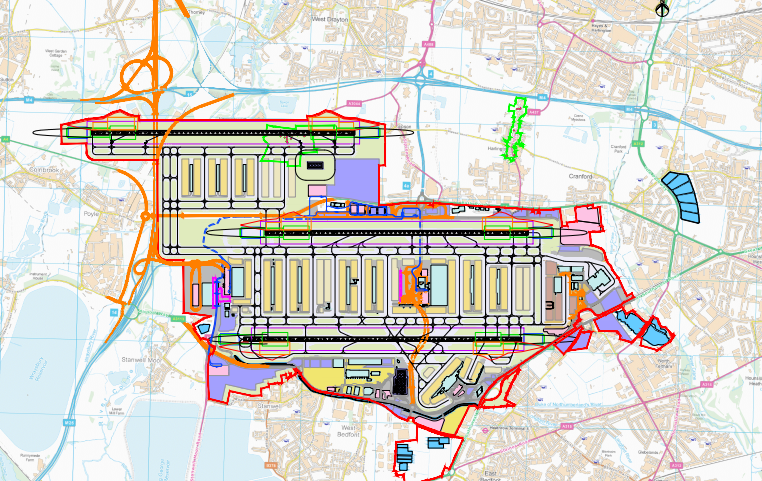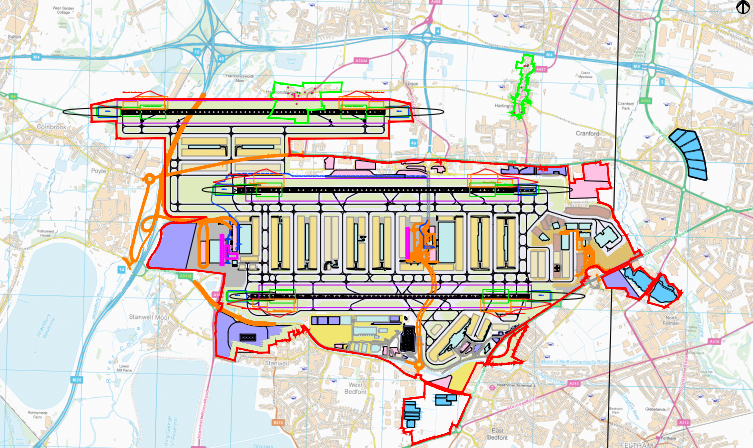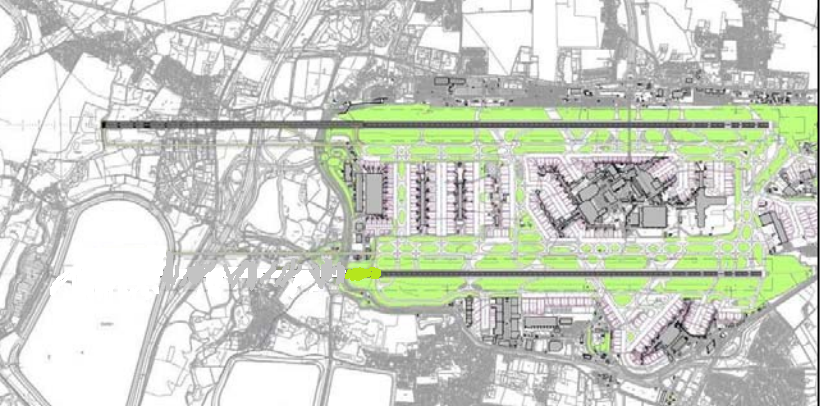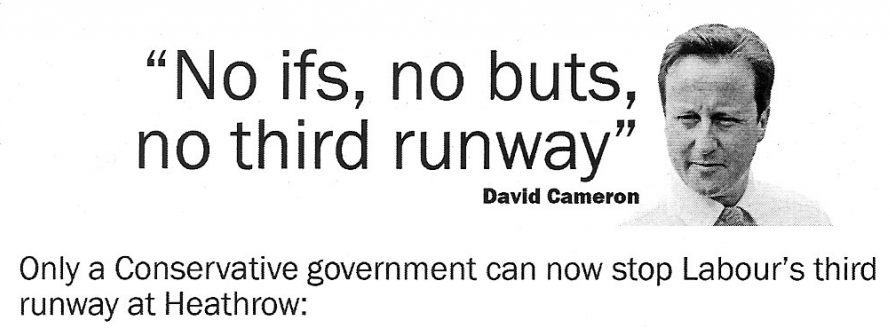Heathrow Airport general information
For some recent news stories about Heathrow, see
The planning milestones were:
- Runway consultation 2019 (started 18th June – ends 13th September)
- Heathrow develops it application for a Development Consent Order (DCO) 2020-2021
- Application submitted and planning inquiry conducted in 2020-2021
- Final decision by Secretary of State for Transport late 2021-early 2022
- Flights paths decision after this
But all that is delayed. Nothing is expected before the end of 2022.
To complain about Heathrow noise. Complaint form
Update from CISHA: (mid 2022)
An Update on the Council for the Independent Scrutiny of Heathrow Airport (CISHA)
We are now well underway in transitioning the HCEB [Heathrow Community Engagement Board] into CISHA as outlined during the last Forum meeting in 2021. The stakeholder engagement work we carried out last year and subsequent conversations have been incredibly useful, not just in terms of arriving at a more efficient and effective framework, but also in informing how we go about our business.
The CISHA Chair recruitment is in progress, and we will soon be moving to shortlisting with the final interview in June. The new Chair will be in place shortly thereafter.
As with previous recruitment both the shortlisting panel and final panel will be comprised of a cross-section of stakeholders. We will announce the appointment on this website and in an email to stakeholders.
Immediately after and throughout the summer we will be coordinating a series of one-on-ones and small group meetings with the new Chair to allow substantive engagement. Ahead of those we will reach out stakeholders requesting written background briefings. This is an important stage. During our stakeholder engagement work the need for this came out loud and clear.
We anticipate holding our first CISHA Annual Open Forum (the widest attended meeting of the new set-up) in early autumn with smaller group meetings, and meetings with the other Chairs of Forums within HAL’s engagement structure throughout the summer ahead of that.
We are continuing our work on redefining and enhancing our role as Heathrow Airports ACC. Again, your feedback has been vital in this area. It is our primary focus with a strong emphasis on independence, integration, openness, and transparency, creating a framework for productive dialogue and resolution.
The Passenger Services Group continues its work, meeting in person for the first time since the pandemic began earlier this month (they have been meeting virtually) and are also working on new ways of engagement in line with CISHA’s framework.
The new website will go live just ahead of the Chair’s appointment with the HCEB site archived. We will update you when that happens. Our email will change in due course but at present please keep using the HCEB address.
Thanks again for all of your help. Your contributions and feedback throughout the existence of the HCEB and the HACC have been invaluable.
With post-pandemic recovery underway the ending of our ‘pause’ is timely and both we and Heathrow Airport Limited are looking forward to comprehensive and constructive engagement.
If you have any questions or suggestions please reach out to either of us.
Yours sincerely
Rebecca Cox, Head of Secretariat
Mark A Izatt, Non-Executive Director
Email; info@hceb.org.uk
Phone: 02034 880290
Write:
PO Box 1590,
BEDFORD,
MK41 5BL
For a very readable summary of the key arguments against a Heathrow 3rd runway, see
Reality Check: Why politicians should reject the third runway. Excellent 2 page summary by Sally Cairns and Carey Newson
For a masterful summary (2 pages with all references) of the reasons why the UK government should not be persuaded into allowing a 3rd Heathrow runway, see this briefing by Sally Cairns and Carey Newson, from Transport for Quality of Life. They sum up all the ways in which the business case for the runway is flawed and the environmental case rests on hugely optimistic assumptions. They list these as: “planes will get cleaner and quieter at a faster rate than has previously been expected; cars and vans will also get dramatically cleaner; freight movements will somehow be optimised; the latest National Air Quality Plan will deliver all anticipated air quality improvements; the fledgling international aviation carbon offsetting scheme will generate a high enough carbon price; the national Aviation Strategy (not yet written) will come up with cost-effective mechanisms for constraining aviation emissions further; the new Independent Commission on Civil Aviation Noise will prove effective; a review of airspace (that has not taken place for over 40 years, as it is so controversial) will take place soon; HS2, Crossrail and the Piccadilly line upgrades will attract air passengers and airport staff in sufficiently large numbers; funding will be found for Western and Southern rail access; etc. It seems very unlikely that all of these will fall into place.”
Click here to view full story…
To track Heathrow flights (20 min delay) see Webtrak Data going back a rolling 365 days.
The proposed timeline for a 3rd Heathrow runway
The process started with a draft Airports National Policy Statement (NPS) published early in 2017 – followed by a 16 week consultation on the draft NPS and associated documents.
The NPS then went to the Transport Select Committee, which made its report in March. https://www.airportwatch.org.uk/2018/03/transport-committee-demands-serious-changes-to-governments-heathrow-case-before-any-vote-in-parliament/
The Select Committee made its report and recommendations to Parliament. The DfT will also review all the consultation responses and write a report of its recommendation. The NPS and its supporting documents will be amended and updated by the DfT, taking account of the consultation responses and the Parliamentary scrutiny process.
June 2018 (originally intended to be by autumn 2017) the Government placed the final NPS before Parliament. There was a (ludicrously short) debate in the Commons. The NPS was voted for. So the NPS was then deemed to be “designated” (ie. comes into force) by the Transport Secretary, Chris Grayling.
There were six legal challenges. Those were rejected by the High Court, but all have been given leave to Appeal. Those Appeals start on 17th October.
As the runway is considered to be a Nationally Significant Infrastructure Project (NSIP) through the Planning Act 2008, Heathrow would then submit a development consent order (DCO) to the planning inspectorate. (It is not a normal planning application, via the local authority – but it is considered in relation to the NPS).
Heathrow has done some pre-application consultation events, before the DCO stage. There would then be a planning inquiry and examination (taking at most six months).
Heathrow will also be required to complete a number of environmental assessments to support its application for development consent. These include an Environmental Impact Assessment, an Environmental Statement, a Statement on Compliance with the Habitats Directive and a Flood Risk Assessment.
The planning inspector then submits his report to the Secretary of State (within three months); and the Secretary of State considers the report and announces a decision (within 3 months). This would, at the earliest, be around the end of 2018.
The DfT expects the runway planning process to take perhaps 3 years, 2018 – 2021 or 2022. The DfT hope the runway would be operational by some time after 2025 or the late 2020s.
** NEW ** Short briefing. Key fact and figures about Heathrow
“Key Facts & Figures – Heathrow“
Government decides on new runway at Heathrow – with no certainty on air pollution, noise or CO2
The government has made its announcement that it backs a 3rd runway at Heathrow, using the north west option (not the extended northern runway). It has decided to entirely follow the recommendation of the Airports Commission, by backing one runway only. The statement from Chris Grayling is on the DfT website, with a list of supporting documents. The government glosses over details of how it could ensure the runway did not cause worse air pollution, or worse noise, or higher CO2 emissions. Neither the DfT statement, nor Chris Grayling’s contributions in the House, give any clarity or reassurances on most of the problems that a 3rd runway will create.
Chris Grayling announced the government’s backing for Heathrow in Parliament. The Hansard version of the statement and questions in the Commons is at https://hansard.parliament.uk/commons/2016-10-25/debates/4D74A7CB-8921-48BD-9960-FD15D5D1EEDF/AirportCapacity
Documents on Heathrow runway plans added by DfT on 25th October 2016
https://www.gov.uk/government/collections/heathrow-airport-expansion
“Further review and sensitivities report: airport capacity in the south-east“
Local residents or airport opposition groups:
Main organisation is the No 3rd Runway Coalition – which the other groups work with and through.
No 3rd Runway Coalition
Also
Hammersmith & Fulham No 3rd Runway
BASH Runway Three (Brentford & Hounslow Stop Heathrow Expansion)
Plane Hell (in South East London)
Stop Heathrow Polluting Us (Bayswater)
Stop the Flight Path Trial Around Ascot (Facebook)
Below are various groups
- Aircraft Noise Lightwater representing Lightwater, Windlesham, Bagshot
- Chavey Down Residents’ Association
- Eton Community Association
- Residents Against Aircraft Noise – RAAN representing Bracknell, Binfield, Crowthorne, Sandhurst and environs (Facebook)
- Wentworth Residents Association – WRA representing Wentworth & Virginia Water
- West Windsor Residents Association – WWRA
- OGFRA – Oakley Green & Frimley Residents Association
Hacan – noise only
Heathrow documents submitted to the Airports Commission on 14.7.2014
Heathrow documents for its proposed 3rd runway submitted to Airports Commission 13.5.2014
http://your.heathrow.com/britainsheathrow/downloads/
For a very readable summary of the key arguments against a Heathrow 3rd runway, see
Reality Check: Why politicians should reject the third runway. Excellent 2 page summary by Sally Cairns and Carey Newson
For a masterful summary (2 pages with all references) of the reasons why the UK government should not be persuaded into allowing a 3rd Heathrow runway, see this briefing by Sally Cairns and Carey Newson, from Transport for Quality of Life. They sum up all the ways in which the business case for the runway is flawed and the environmental case rests on hugely optimistic assumptions. They list these as: “planes will get cleaner and quieter at a faster rate than has previously been expected; cars and vans will also get dramatically cleaner; freight movements will somehow be optimised; the latest National Air Quality Plan will deliver all anticipated air quality improvements; the fledgling international aviation carbon offsetting scheme will generate a high enough carbon price; the national Aviation Strategy (not yet written) will come up with cost-effective mechanisms for constraining aviation emissions further; the new Independent Commission on Civil Aviation Noise will prove effective; a review of airspace (that has not taken place for over 40 years, as it is so controversial) will take place soon; HS2, Crossrail and the Piccadilly line upgrades will attract air passengers and airport staff in sufficiently large numbers; funding will be found for Western and Southern rail access; etc. It seems very unlikely that all of these will fall into place.”
Click here to view full story…
Letter from Hounslow Council to Airports Commission July 2014
Current situation
There is now, once again, the worrying prospect of a new runway possibly being built at Heathrow, some time before 2030. Plans for a 3rd runway were rejected by the Conservative – Liberal Democrat coalition government in 2010. BAA also then announced that it was scrapping plans for a 3rd runway. But not for long. Earlier the Labour Government had announced in January 2009 that they would allow a 3rd runway at Heathrow.
The Conservative party, and the Coalition government in 2010 made a commitment that clearly said: “No ifs. No buts. No 3rd runway.” But bowing to pressure from the aviation industry and its lobby, it decided to hand the decision of what to do about a 3rd runway to an “independent” body, the Airports Commission (with DfT secretariat), to report finally in 2015, a month or two after the May 2015 general election. The Commission produced its interim report in December 2013, with two options for a 3rd Heathrow runway short-listed.
The airport is now likely (January 2014) to hold a local consultation on which of the two options (a North-West runway destroying Harmondsworth and Sipson, or the northern option by “Heathrow Hub”) the residents of the area “prefer”. The Commission will require both submissions to be fleshed out in detail and submitted by 9th May 2014. They may be published then, or not till later. Then after October 2014, the Airports Commission is due to hold a public consultation, on the detailed schemes, lasting perhaps till December 2014. Its final recommendation to the government of the day would be made in summer 2015. None of the parties has committed itself to accepting the Commission’s recommendation.
More on the saga of the Heathrow Third Runway
Heathrow is one of the world’s busiest airports, handling more than 70 million passengers in 2012. It handles the most international passengers of any airport (some US airports handle more, but largely domestic) though it is likely to be overtaken before long by Dubai. More than a third transfer onto other flights, making it a busy hub airport. Those transfer passengers using Heathrow to change flights have helped create a large route network. Heathrow is close to full capacity on ATMs (not on terminal capacity). Some 725,000 already live under the flight paths, within the 55 DBA Lden noise contour, and suffer aircraft noise. There were around 475,000 flights using Heathrow in 2012.
Airports Commission Interim Report
https://www.gov.uk/government/organisations/airports-commission
The Airports Commission’s Interim Report, in December 2013, short-listed two Heathrow options for a 3rd runway. One is from Heathrow airport itself, (its North-West option) and the other the northern option from a group called “Heathrow Hub.” Maps illustrating the proposals below.
Airports Commission: interim report (228 pages)
Heathrow Airport’s own 3rd runway option, being considered by Airports Commission
Heathrow has now been short-listed by the Airports Commission for a new runway (December 2013).
Heathrow submitted their proposal for 3rd runway (and eventually a 4th, to the Airports Commission in July 2013. The short version can be seen at
A New Approach – summary document
and the full details are on the Heathrow website. They say:
“Heathrow’s submission of options for additional capacity to the Airports Commission is available in full here. This is the full submission document, which was submitted to the Commission in July 2013 and contains all technical information available at this stage regarding the proposals.
Included in this document are details of our proposals for additional capacity to the North West of Heathrow Airport, which has been short-listed for further consideration by the Airports Commission and will now be examined in more detail.
Following the Airports Commission’s interim report in December 2013, we will be working closely with local residents as options are developed in more detail during the next stage of the Airports Commission process.”
Long-term Hub Capacity Options: full submission document
Supporting maps
North-Western option – potential optimisation (ie runway very slightly further south, leaving the heart of Harmondsworth, the church, the ancient and wonderful Tithe barn within a few yards of the edge of the runway)
South-Western option (not short-listed by the Commission)
Northern option (not short-listed by the Commission)
.
An option – not from the airport itself – put forward by a company called “Heathrow Hub” is for an extension to the west of the current northern runway. Details below.
The North-West runway option map (which destroys Sipson and Harmondsworth)
The North-West option “optimisation” map (which leaves the heart of Harmondsworth alongside the runway)
The “Heathrow Hub” 3rd runway proposal, short-listed by the Airports Commission
Their plans can be seen at http://www.heathrowhub.com/
The Airports Commission, in December 2013 in their Interim Report, short-listed the northern option (not the whole proposal).
Their full submission is at http://www.heathrowhub.com/media/download_pdf/Report_190713_Rev_A.pdf
It would look something like this:
The southern option would have meant building a runway over the Wraysbury reservoir, with all the attendant problems.
Heathrow’s plans for a 4th runway
Heathrow Airport’s July 2013 submission to the Airports Commission sets out its plans for, eventually though not in the short term, a 4th runway. Options 1 and 2 require building over reservoirs. Option 3 involved building the runway over the M4 to the north.
Among other comments in the Heathrow proposal, on the 4th runway, Heathrow says:
“Our initial analysis shows that it would be possible to have four runways at Heathrow, while still reducing the total number of people within Heathrow’s noise footprint compared to today. We estimate the cost of developing a fourth runway at Heathrow at an additional £8-14 billion depending on the option. Developing from a three-runway to a four-runway Heathrow would require the compulsory purchase of 850-950 additional properties under the North-West/South-West option, 850-2,700 additional properties under the North/South-West option or 200 additional properties under the dual North-West option.”
They also say, of the 4th runway:
“As an example of this further optimisation, we are already investigating a revised
version of our North-West option which moves the new runway further south to
its minimum spacing. This serves a double purpose – to allow the potential future
addition of a fourth runway in the north-west and to minimise the impact of a third
runway in that area. Initial analysis shows that this new third runway location will
preserve the most important heritage sites in Harmondsworth – St. Mary’s Church
and its cemetery, the Tithe Barn and the village green and its surrounding properties
and have considerably less residential property impact (600 as opposed to 950
properties). It would also avoid the need to rebuild the M4 / M25 junction. We intend
to continue to explore this variation, which we have included in Appendix A, with our
other option plans (entitled 3R North-West: Potential Optimisation) and will share this
information as it emerges if requested to do so by the Commission.”
.
For publications relating to Heathrow, see
Heathrow’s Noise Action Plan 2010 – 2015
Executive Summary is at http://www.heathrowairport.com/static/Heathrow_Noise/Downloads/PDF/NAP_exec_summary.pdf
2012 maps
- Easterly arrivals map 2012 (8.1MB)
- Westerly arrivals map 2012 (7.8MB)
- Easterly departures map 2012 (7.7MB)
- Westerly departures map 2012 (7.8MB)
Heathrow’s noise contour maps
These are at https://www.gov.uk/government/uploads/system/uploads/attachment_data/file/244529/lhr-2012.pdf dated September 2013 (by the CAA and the Dft)
The map towards the end of the above document (Page 32) “Noise Exposure Contours for Heathrow Airport 2012”
is copied below.
Original Page 32 of https://www.gov.uk/government/uploads/system/uploads/attachment_data/file/244529/lhr-2012.pdf
and there are more maps too.
Heathrow Airport’s aircraft tracking maps
These are at http://www.heathrowairport.com/noise/noise-in-your-area/aircraft-tracking-maps
BAA Heathrow Operational Freedoms Trials
November 2011 to March 2012 and during the Olympics
People living under Heathrow flight paths faced increased noise after the introduction of new runway rules. BAA has trialled a scheme allowing the use of both runways simultaneously from July to Sept 2012. Currently, those living under the flight path have a respite from noise when the runways alternate at 3pm. Under the trial, which will also run from November 2012 to February 2013, the threshold for triggering emergency dual use of the runways will be lowered. Residents could face increased noise from losing some of their respite periods. More details …..
On 1st November 2012, BAA (now called Heathrow Airport) announced that two parts of the trails will not take place (Phase 2, Operational Freedoms 2 and 3 – about delaying flights from 4.30 to 5.00am in exchange for more flights from 5.30am to 6am; and re-directing departing aircraft from their route sooner after take-off). More details ….
Easterly arrivals map and Westerly arrivals map
Night Flights
Government to make no significant change to night flights regime at Heathrow, Gatwick and Stansted until Airports Commission report
Heathrow WebTrak
Track flights near you with WebTrak
WebTrak is BAA’s online tracking tool that you can use to see where aircraft are flying in relation to where you live or work. It is a self-service enquiry system showing actual Heathrow aircraft flight tracks, heights and aircraft types.
Please note that there is a delay of 24 to 48 hours on the flights shown on WebTrak due to UK aviation security restrictions.
.
View the 2014 runway alternation programme (186 KB PDF)
This shows for each week throughout the year, which runways will be used earlier or later in the day. Using Runway Alternation, every week landings switch at 3pm each day for the duration of the week, giving residents under the flight paths some respite from the noise.
Details of runway alternation on the Heathrow website at http://www.heathrowairport.com/noise/what-we-do-about-it/measures-already-in-place/runway-use/runway-alternation
.
Actual text from Conservative election leaflet for the May 2010 election. Full leaflet at http://www.electionleaflets.org/leaflets/full/b58fa8c95aec5d810bfe2ebb16bcbf91/






